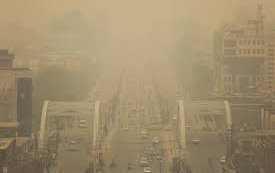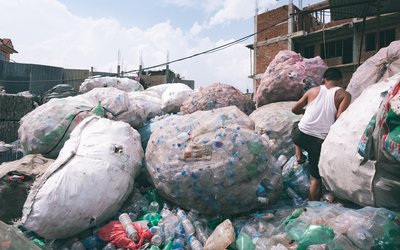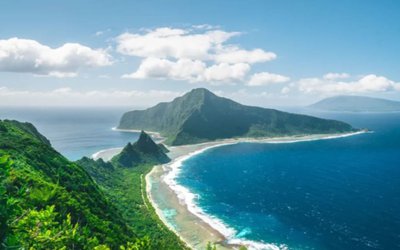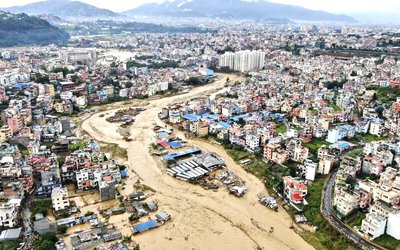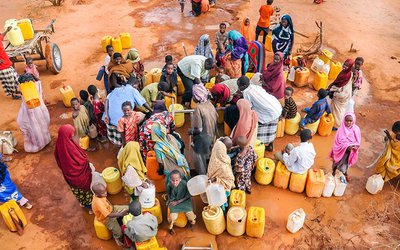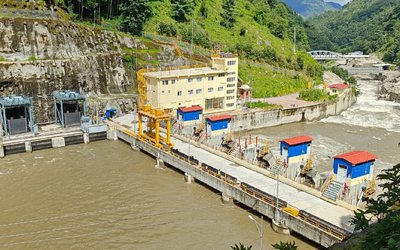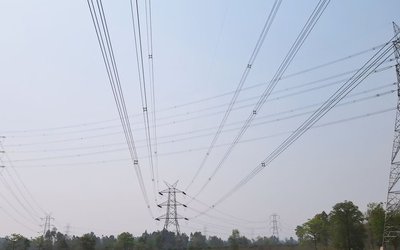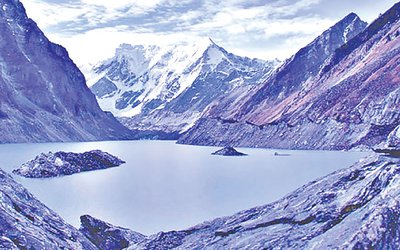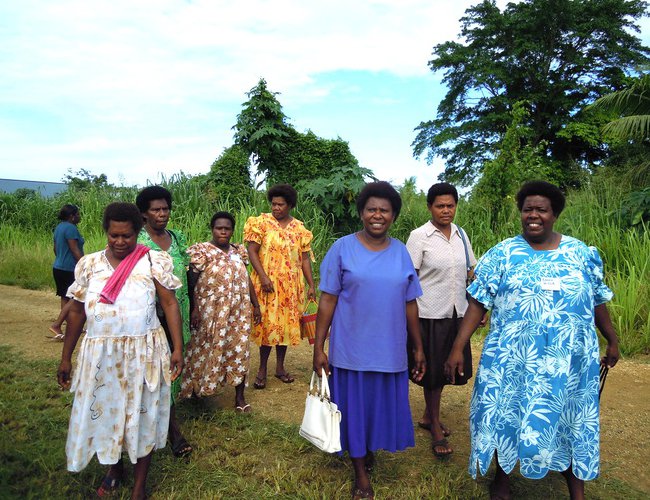
On the Edge: Women, Islands, and a Changing Climate
In the vibrant Pacific and Caribbean regions, women are the quiet powerhouses behind both on- and off-farm work. It is they who nurture crops, tend home gardens, and harvest seafood drawing upon deep-rooted indigenous wisdom. Beyond fields and shores, they shine in informal trade, artisanal crafts, and community enterprises. Again, though, their vital contributions often go unrecognized and under-supported. As climate change unsettles tides and seasons, women are finding that their livelihoods are increasingly at risk. Crop productivity is declining, fish stocks are dwindling, and storms are growing more intense, and the systems meant to support women are lagging behind, offering too little, too late.
Women are on the front lines of the climate crisis, grappling with rising sea levels, extreme weather events, and environmental degradation that threaten their homes, food security, and economic resilience. In Kiribati, the Marshall Islands, and Tuvalu, coastal erosion and saltwater intrusion endanger agriculture and freshwater supplies as rising seas and storm surges contaminate soil and groundwater, disproportionately impacting the women who depend on these resources daily. Hurricanes such as Dorian in The Bahamas (2019) and Maria in Dominica (2017) disproportionately impacted women, who were left with heavy caregiving responsibilities and limited means to recover. Many lacked access to financial resources, social protection, and meaningful participation in recovery decision-making processes. These are just a few of the mounting challenges that have deepened gender inequalities, making it ever more urgent to design inclusive climate adaptation strategies that place women’s needs, knowledge, and leadership at the heart of resilience-building. According to UN Women (2024) and the World Bank (2024), Latin America and the Caribbean have closed 74.2% of their gender gap, ranking third globally with an 8.3-point improvement since 2006. In comparison, East Asia and the Pacific have closed 69.2% of their gender gap, ranking fourth with a 3.1-point increase over the same period. This divergence reveals the Caribbean’s accelerating momentum in gender equality, while the Pacific’s progress remains cautious and uneven, shaped by persistent socio-cultural and institutional barriers.
Across the Pacific and the Caribbean, women are at the forefront of grassroots climate resilience. They often turn challenges into opportunities for empowerment and sustainable change. In Fiji, the Women in Fisheries Network has revived traditional practices and restored mangroves to protect marine ecosystems. In the Solomon Islands, women-led solar committees manage renewable energy systems in off-grid communities, while in Vanuatu, women lead disaster preparedness efforts that are inclusive and community-driven. Cooperatives of women farmers in the Dominica have been promoting climate-smart agriculture since Hurricane Maria. Soil empowers young women through agro-ecology, and Haitian women, through initiatives like Fonkoze, combine reforestation with economic empowerment, and Jamaican female farmers implement climate-smart agriculture to combat drought. These initiatives showcase the fact that women are leading the way in building resilient, adaptive communities. With support from programs such as the Pacific Resilience Program and UNDP’s Enabling Gender-Responsive Disaster Recovery and Climate and Environmental Resilience in the Caribbean Project, women’s voices are increasingly shaping policy frameworks and funding mechanisms. Strengthening women’s leadership in climate governance and providing better access to resources will be key to building more sustainable, and equitable climate adaptation strategies in both regions.
Climate Shockwaves across Every Sector
Climate change intensifies water scarcity and food insecurity by altering rainfall patterns, increasing the number and intensity of droughts and floods, and disrupting growing seasons. These changes in turn reduce crop yields, degrade soil quality, and limit access to clean water, threatening the livelihoods and nutrition of vulnerable communities. Water scarcity and food insecurity, worsened by climate change, place immense pressure on women in both the Pacific and the Caribbean. In Kiribati and Tuvalu, rising sea levels have contaminated freshwater sources, forcing women to walk longer distances for water, a trip that exposes them to health risks and physical danger. Similarly, in Haiti and Saint Kitts and Nevis, prolonged droughts frequently strain women with the task of rationing water while also caring for children and the elderly. Shifting rainfall patterns and extreme weather events also devastate agriculture. Indeed, women farmers in Fiji, the Dominican Republic, and Saint Vincent and the Grenadines are all grappling with reduced harvests and declining soil fertility. Climate change further impacts small-scale fisheries, a key income source for women, as seen in Papua New Guinea, Barbados, and Trinidad and Tobago, where warming oceans and coastal damage has reduced fish stocks and disrupted businesses. Without targeted interventions to improve water access, support resilient farming, and strengthen fisheries, women in these countries will continue to bear the brunt of climate-induced hardships.
Climate-induced migration and displacement occur when rising sea levels, extreme weather events, or prolonged droughts force communities to leave their homes in search of safety and sustainable livelihoods. Climate-induced migration and displacement are becoming significant challenges, especially for women in low-lying Pacific and Caribbean island nations. In Kiribati and the Marshall Islands, coastal erosion, saltwater intrusion, and extreme weather has forced families to relocate, exposing women to the challenges of securing housing, employment, and social support. Displacement also disrupts vital support networks, as seen in Haiti. The loss of ancestral lands and cultural heritage further exacerbates the emotional and psychological toll, particularly for Indigenous women in Vanuatu and the Solomon Islands, whose identities are tied to the land. As these women navigate the trauma of displacement and the erosion of their traditional way of life, addressing their gendered needs becomes ever more crucial to building resilience and ensuring their safety and wellbeing.
How Climate Change Exacerbates the Gender Divide
Climate change is having profound socio-economic and health impacts on women in the Pacific and the Caribbean, deepening existing gender inequalities in both regions. In Tuvalu and Kiribati, rising sea levels and extreme weather events threaten homes, agricultural land, fisheries, and freshwater sources, all critical resources for women’s income and sustenance. Similarly, in Saint Lucia and Haiti, climate-related disasters disrupt agriculture, exacerbate food insecurity, and push women into economic instability. Women, especially those who live in rural and coastal communities, rely on natural resources for their livelihoods, yet rising sea temperatures and the degradation of coral reefs in Fiji and the Bahamas are depleting fish stocks and soil fertility. The lack of land ownership, financial services, and employment opportunities further hinders their ability to recover from climate shocks. In Dominica and Jamaica, women’s limited access to land rights and finance traps them in a cycle of poverty, a fact that underscores the need for policies that empower women and enhance their resilience to climate change.
Climate-induced stressors significantly impact women’s health and wellbeing, escalating workloads due to water and food scarcity and increasing caregiving responsibilities. In the Solomon Islands and Vanuatu, women endure long walks to fetch water during droughts, a trial that leads to physical exhaustion and mental health challenges, especially in rural areas with limited access to healthcare. After a climate-related disaster, women often face difficulties accessing essential healthcare, including maternal and reproductive services. For example, following Hurricane Dorian in the Bahamas (2019), many women struggled to get the care they needed, thereby increasing the risks of pregnancy complications and malnutrition. In Haiti, repeated climate-induced disasters have overwhelmed health systems, leaving women vulnerable to inadequate maternal care. Displacement and overcrowding in shelters also raise women’s risk of gender-based violence, as seen in the aftermath of Typhoon Haiyan (2013) in the Philippines and Irma hurricanes (2017) in Cuba and Maria (2017) Dominica, where disruptions to community support networks have exposed women to greater violence and exploitation. These gendered impacts underscore the urgent need for comprehensive healthcare and support systems to protect women’s well-being in climate crises.
The cultural and social consequences of climate change are deeply affecting women, threatening both their livelihoods and their cultural heritage. In Kiribati and Tuvalu, rising sea levels and extreme weather events force communities to migrate, disrupting traditional knowledge and practices that women play a key role in preserving. As migration erodes cultural identity, the transmission of vital skills, such as farming techniques and craftsmanship, is at risk. Displacement also weakens social networks that are critical for women’s resilience. In places like Saint Vincent and the Grenadines and Haiti, repeated displacements have left women isolated, without the support of extended families and community structures. As a result, they have often been unable to access essential resources such as childcare and mental health services. Without gender-responsive policies that prioritize cultural preservation and women’s involvement in climate adaptation and recovery, climate change will continue to undermine women’s rights, security, and resilience in the Pacific, the Caribbean, and elsewhere.
Policies and Practices Shaping Climate Resilience
At the policy front, across the Pacific and the Caribbean, a growing wave of national, regional, and global policies has woven gender equality into the fabric of climate action. These frameworks recognize both the unique vulnerabilities and powerful contributions of women, championing their leadership in disaster preparedness, climate-smart agriculture, and renewable energy solutions. In the Pacific, a suite of powerful frameworks has put women at the heart of climate resilience. From the Framework for Resilient Development in the Pacific (2016) to Pacific Resilience Partnership (2017), gender-responsive strategies are championing women’s leadership, inclusive participation, and equitable access to climate solutions. The Samoa Pathway (2014) reinforces this momentum by prioritizing gender equality in adaptation and disaster risk reduction. The Pacific Leaders’ Gender Equality Declaration and Pacific Gender and Climate Change Action Plan (2012) emphasize that women play a vital role, while practical tools like the Gender and Climate Change Toolkit (2013) and national disaster plans further ensure that climate action will be inclusive, just, and effective.
In the Caribbean, a strong policy push is advancing gender equality in climate resilience. The Caribbean Community Gender Equality Policy (2023) champions women’s leadership and access to resources for adaptation, while the Caribbean Disaster Emergency Management Agency Gender and Climate Change Policy (2017) and its gender-sensitive strategies promote inclusive disaster planning. The Regional Strategy for Climate-Resilient Development (2009) and the Comprehensive Disaster Management Strategy (2014–2024) embed gender equity in all resilience efforts. Nationally, policies in Saint Lucia and Jamaica emphasize gender-responsive adaptation and disaster management, ensuring women’s voices are central to building a climate-resilient future. Globally, policies like the UNFCCC Gender Action Plan (2017), Paris Agreement (2015), SDG 5, and the Sendai Framework (2015–2030) champion women’s leadership in climate action. All of them call for inclusive, equitable, and gender-responsive solutions.
In terms of practice, across the Pacific and the Caribbean, dynamic initiatives are addressing the gendered impacts of climate change by focusing on resilience, economic empowerment, and disaster preparedness. The Women’s Resilience to Disasters Initiative (2021) strengthens women’s leadership in disaster risk reduction, while the Pacific Women Climate Change Program helps women create climate-smart livelihoods in agriculture and fisheries. The Caribbean Women in Climate Change Network empowers women farmers and entrepreneurs to adopt sustainable practices. Gender-sensitive disaster-response mechanisms such as the Caribbean Risk Information program II (2020) and Pacific Resilience Program (2016) ensure that women’s needs, including safe shelters and healthcare access, are met during crises. Grassroots platforms like Fiji’s Women’s Weather Watch amplify women’s voices in climate activism and policy. International support from the Green Climate Fund and Global Environment Facility backs gender-inclusive projects such as mangrove restoration and sustainable water management. Strengthening these efforts with greater investment and policy integration will enable women to be leaders of resilient, sustainable communities. UNDP in the both regions supports gender-responsive climate action through key initiatives. In the Pacific, the Pacific Adaptation to Climate Change Project (2009) integrates gender-sensitive approaches into climate resilience, while the Gender and Climate Change Program (2011) offers training to integrate gender in climate efforts. In the Caribbean, the EnGenDER Project (2021) focuses on gender in climate adaptation across nine countries, the Japan-Caribbean Climate Change Partnership (2014) promotes low-emission development, and the Climate Resilient Agriculture Project in Grenada mainstreams gender in agriculture. These initiatives empower women and integrate gender in climate resilience.
Women in both regions are at the forefront of transformative climate adaptation. In Fiji, they lead disaster preparedness, while in Saint Vincent and the Grenadines, they combat soil degradation with sustainable farming. Women in Vanuatu protect coastal ecosystems through mangrove restoration and organizations like the National Council of Women in the Solomon Islands and the Caribbean Women in Climate Change Network advocate for gender-responsive climate policies. Scaling these initiatives requires governments and international agencies to invest in women’s education, leadership, finance, and climate-smart technologies, ensuring that women continue to drive resilient and sustainable communities.
Uncovering the Gaps
While strides have been made in recognizing the gendered impacts of climate change, deep gaps still linger across the Pacific and the Caribbean, especially when it comes to turning policies into progress. In many countries, gender considerations are often sidelined in national climate strategies and disaster frameworks due to weak coordination, and limited funding and political will. Women’s voices remain underrepresented in climate governance. Barriers such as restricted land ownership rights and limited financial literacy continue to hinder women’s access to climate finance, technology, and sustainable livelihoods—challenges especially evident in the Solomon Islands, Vanuatu, and Papua New Guinea, as well as Haiti, Saint Lucia, and Grenada. In addition, the absence of gender-disaggregated data and fragile monitoring systems has made it difficult to tailor effective, inclusive solutions. Bridging these gaps calls for more than just better data or stronger policies, it demands bold, heartfelt investments in women’s education, leadership, and equal access to climate finance, green technology, and sustainable livelihoods. It also means opening doors for women to shape the climate agenda, not just as participants, but as powerful change-makers and community leaders. When we nurture women’s innovation, honor their traditional wisdom, and support their roles in vital sectors such as farming, fishing, and disaster response, we unlock the full strength of inclusive resilience. Empowering women is not only fair, it’s smart, sustainable, and essential for building a climate-resilient future that leaves no one behind.
Key Takeaways
To truly safeguard women in the Pacific and Caribbean from the growing threats of climate change, governments, and development partners must work together to prioritize the implementation of gender-responsive climate policies. This means weaving gender equality into the fabric of national adaptation plans, disaster risk reduction strategies, and climate finance systems. Many countries have taken meaningful steps by integrating gender into climate frameworks, but the real transformation will come when women are not just consulted but actually have a seat at the decision-making table. With stronger institutional capacities and more inclusive governance, policies can genuinely reflect the lived experiences and unique vulnerabilities of women.
Empowering women-led, community-based initiatives such as the Pacific Women Climate Change Program in Vanuatu and Grassroots Resilience Projects in Jamaica can spark lasting change from the ground up. At the same time, unlocking women’s access to climate finance, green technologies, and skill-building opportunities is essential for boosting economic resilience. Positive examples from Saint Lucia and the Solomon Islands show that targeted financial mechanisms for women entrepreneurs in climate-adaptive sectors can make a real difference. To scale this impact, more partnerships between governments, development partners, and financial institutions must create accessible, women-first funding channels. Programs like Haiti’s climate-smart agriculture training demonstrate how, in women’s hands, knowledge and innovation can drive sustainable change. But to make this a reality for more women, structural barriers such as land tenure insecurity and limited access to finance, especially in Papua New Guinea and Dominica, must be dismantled.
Equally important is the need to fill critical data gaps. Countries like Barbados and Tonga have started collecting gender-disaggregated data, but broader efforts are needed to fully capture how climate impacts differ for women. Reliable data and strong monitoring systems are vital to designing targeted, effective responses. Partnerships like those championed by the Caribbean and the Pacific communities show the value of collaboration in scaling up gender-inclusive adaptation efforts. Ultimately, when women are seen not just as a vulnerable group but as agents of change who can lead climate action and shaping policy, the Pacific and the Caribbean can build a future that is not only more resilient but also beautifully inclusive and just.
Dr. Dhruba Gautam is an independent evaluator and consultant with deep expertise in energy, natural resource management, climate resilience, and disaster risk reduction and sustainable livelihoods across the Asia-Pacific and Caribbean. His insights in this article draw on decades of hands-on and strategic evaluations of NRM projects in diverse island and coastal contexts. For collaboration or inquiries, reach him at drrgautam@gmail.com
- Confronting Climate Extremes And Environmental Crises In Central Asia: Urgent Action To Strengthen Resilience, Resource Sustainability, And Regional Cooperation
- Jun 03, 2025
- Battling Tides, Rising Waters, And Shifting Shores: Polynesia’s Determined Advance Toward Climate Resilience
- May 19, 2025
- Sustaining Nature; Sustaining Culture: The Anthropology Of Resource Management In The Pacific And Caribbean
- May 09, 2025
- Buried Dangers, Lasting Impact: How Landmines Erode Peace, Stifle Recovery, And Endanger Communities' Wellbeing
- May 04, 2025
- East Asia’s Environmental Evolution: Transforming Climate Challenges Into Drivers Of Ecological Progress And A Resilient Future
- May 02, 2025

